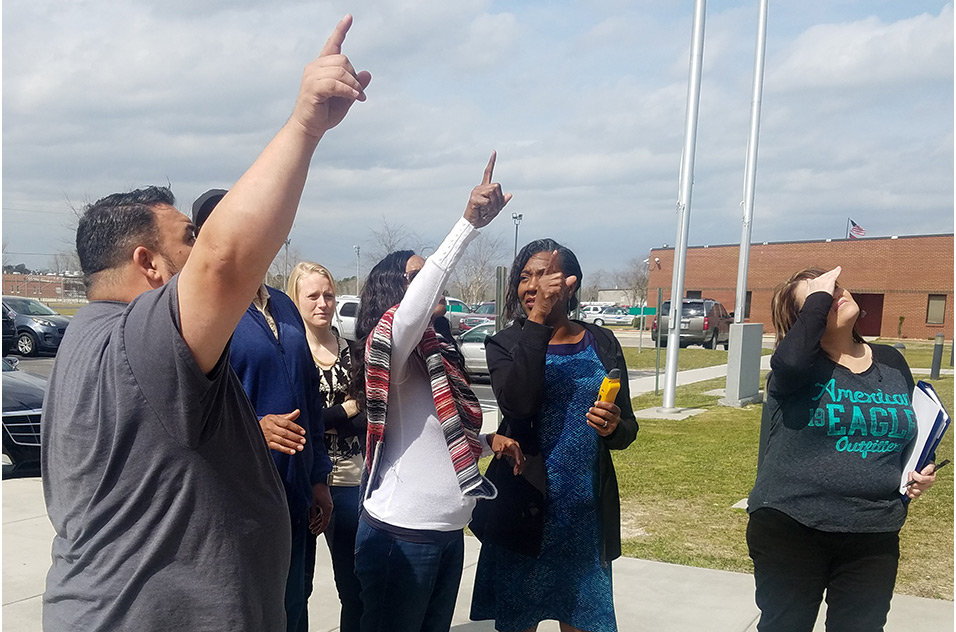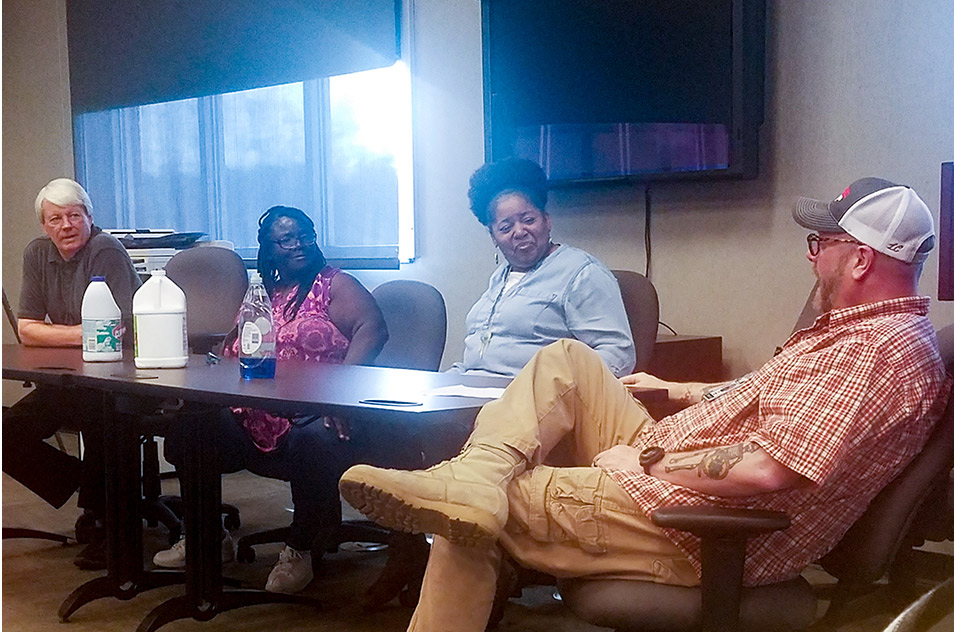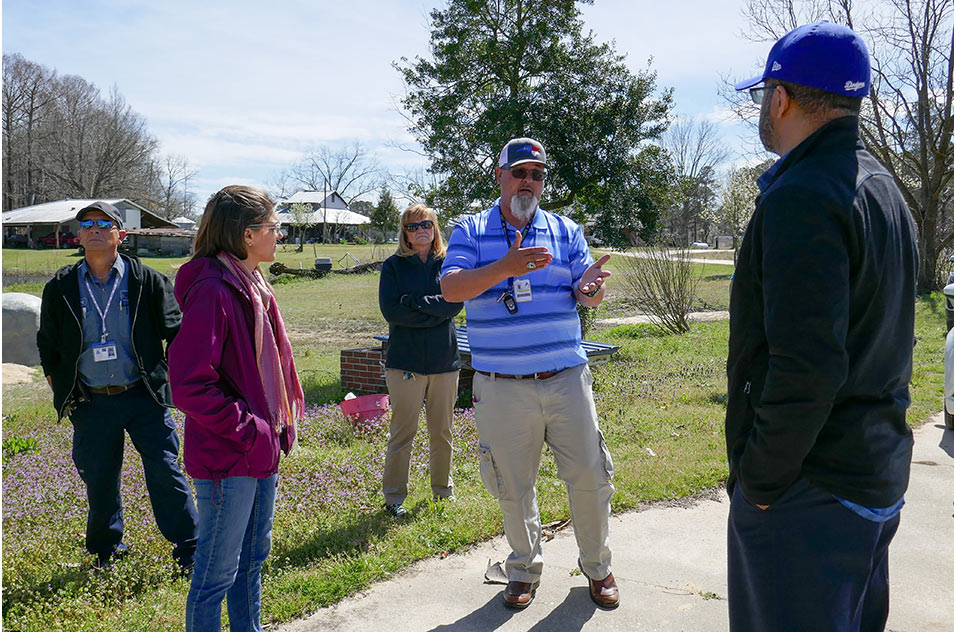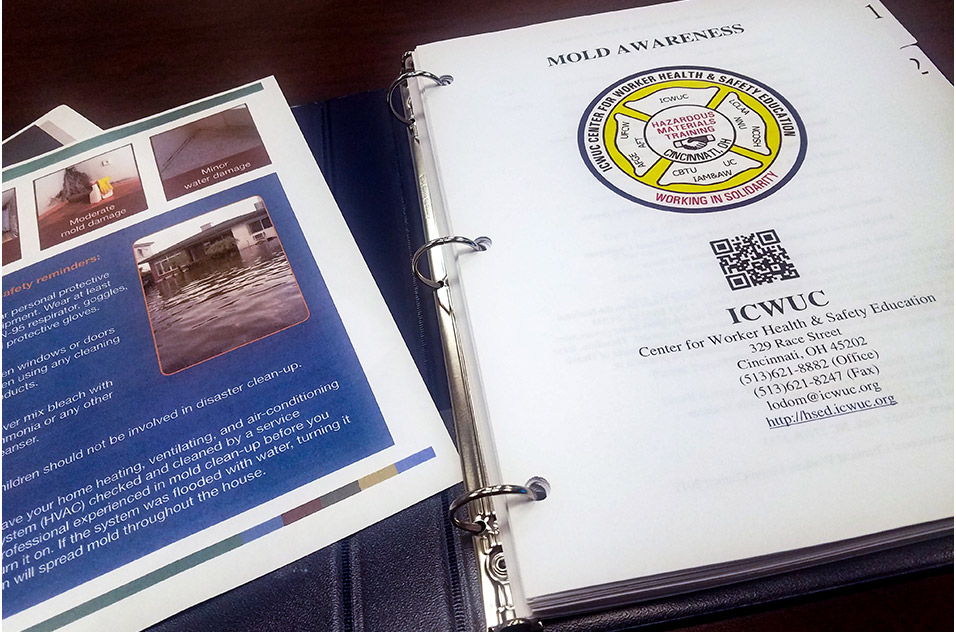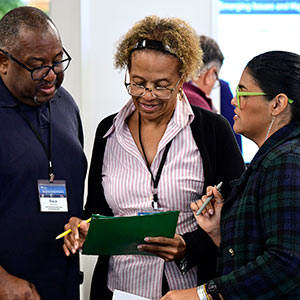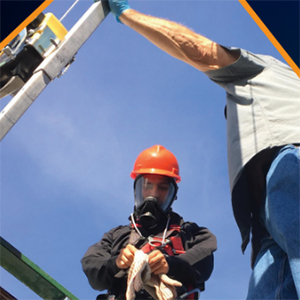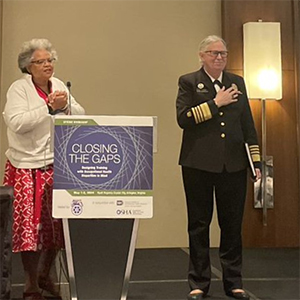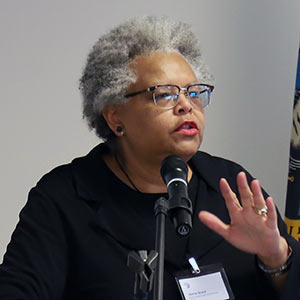In March, NIEHS Worker Training Program (WTP) grantee the International Chemical Workers Union Council (ICWUC) delivered mold remediation training in Robeson County, North Carolina. The training built on a partnership between ICWUC and the Robeson County Disaster Recovery Committee (RCDRC) that was established as part of Hurricane Matthew recovery efforts in 2016.
In September 2018, Hurricane Florence dumped more than two feet of rain on eastern North Carolina. In the record-breaking floods that followed, surging water from the Lumber River destroyed many homes and businesses in Robeson County. Months later, residents still face extensive cleanup, especially of mold.
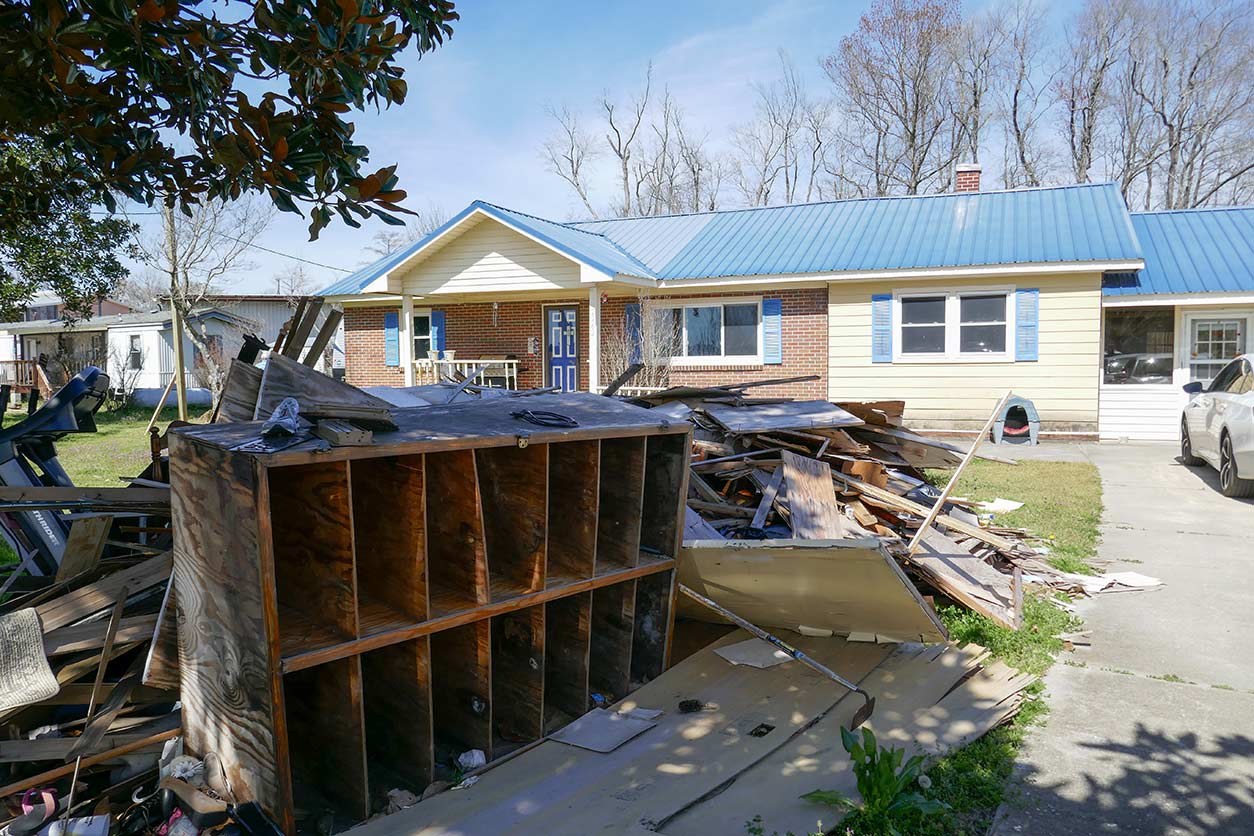 This home is one of many in Robeson County that were flooded during Hurricane Florence. (Photo courtesy of Demia Wright)
This home is one of many in Robeson County that were flooded during Hurricane Florence. (Photo courtesy of Demia Wright)“Mold is one of the biggest issues that we have here in Robeson County,” said Cassandra Campbell, executive director of the RCDRC, which coordinates referral and recovery services for families affected by disasters.
“Building training capacity in the Robeson County long-term recovery group allows them to conduct their own mold remediation classes and have their own local trainers from here on out,” said Joseph “Chip” Hughes, director of the WTP.
Developing new teachers
After flooding, mold can grow on porous building materials such as drywall, air ducts, and ceiling tiles. If left untreated, mold can spread and release toxins that are harmful to human health.
Mold remediation is necessary before repair and re-entry into building structures. However, extended periods of rainfall in eastern North Carolina during the winter months made removal and cleanup difficult.
As repair and rebuilding continued in Robeson County, the North Carolina Department of Public Safety Division of Emergency Management sought training from ICWUC for the department’s new construction analysts. The analyst jobs were created to inspect and assess damage of homes affected by the hurricane.
ICWUC delivered a train-the-trainer (TTT) class on March 11-14 for construction analysts, RCDRC disaster case managers, and other workers. “Participants learned about adult education techniques and the principals of peer learning, in addition to the technical content about mold health effects and remediation techniques,” Hughes explained.
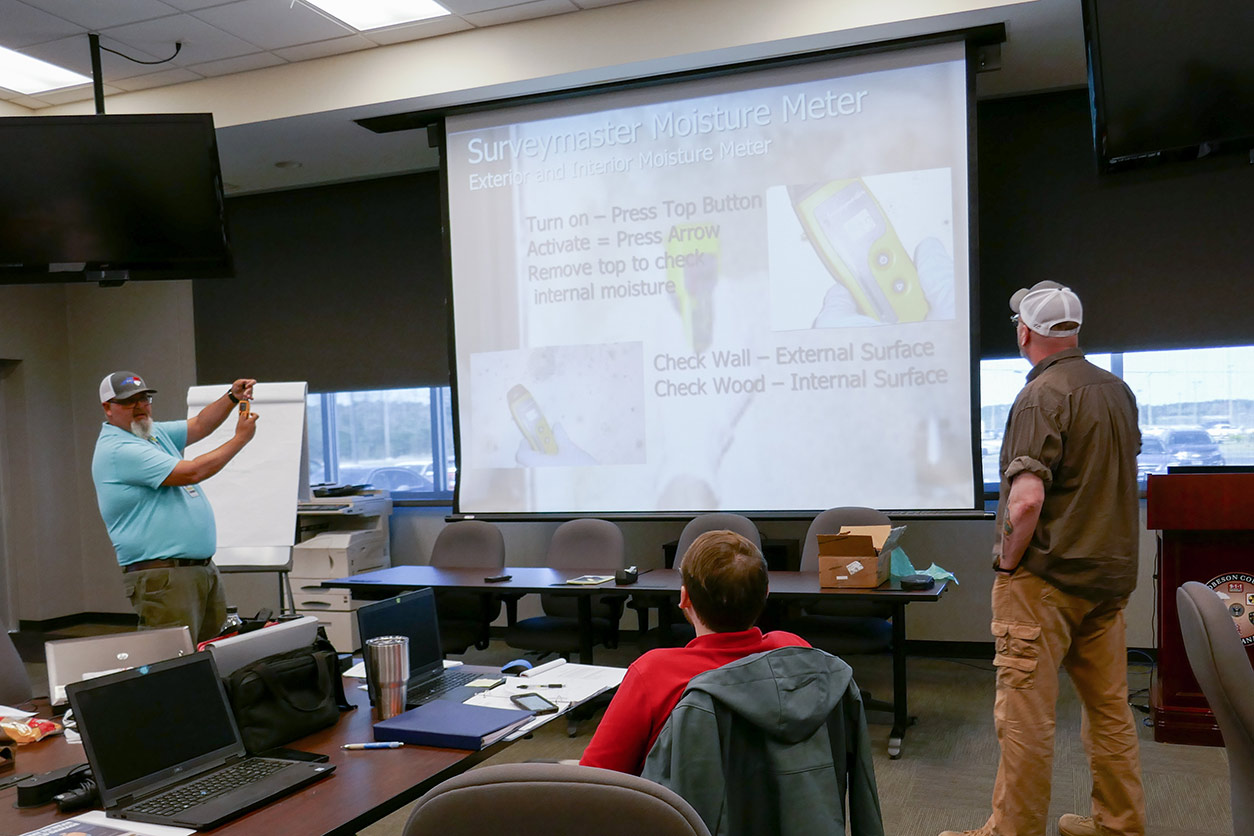 TTT participants practiced teaching portions of the mold remediation module. (Photo courtesy of Demia Wright)
TTT participants practiced teaching portions of the mold remediation module. (Photo courtesy of Demia Wright)At the end of the class, participants shared what they learned and provided constructive feedback to each other. They also wrote skits that illustrated concepts they learned about mold, health, and remediation.
“Peer training is one of the most impactful processes in adult learning, and it is the cornerstone of our training process,” said Hughes.
Raising community awareness
On March 15, nearly 30 community members, workers, and local government officials received a one-day mold remediation awareness course from ICWUC trainers. Participants shared their experiences with mold and expressed concerns about other hazards, such as heavy metals, pesticides, and sewage.
“As a result of these storms, people are becoming more aware of toxins and potential health effects,” said Jay Leggette, RCDRC lead case manager and community resource coordinator. Participants in the earlier TTT class used their new skills to facilitate discussion and small group activities that involved tools to assess indoor and outdoor levels of moisture, as well as scenario-based exercises to test knowledge of mold assessment and remediation.
“This training is one of the most significant interventions that we have done,” said Mac Legerton, co-founder and executive director of the Center for Community Action in Lumberton, N.C.
“Robeson County is going to greatly benefit from the knowledge that you have gained, and we hope to come back soon to deliver more training in the future,” ICWUC trainer Roy McAllister told participants.
Long-term training efforts are needed in Robeson County and surrounding areas. RCDRC and ICWUC will continue exploring ways to deliver mold and other training to broader audiences. Expanded training may include a general construction course for construction analysts, a revised mold TTT class that accommodates the schedules of other workers, and training Hispanic and Native American communities on mold remediation and related topics.
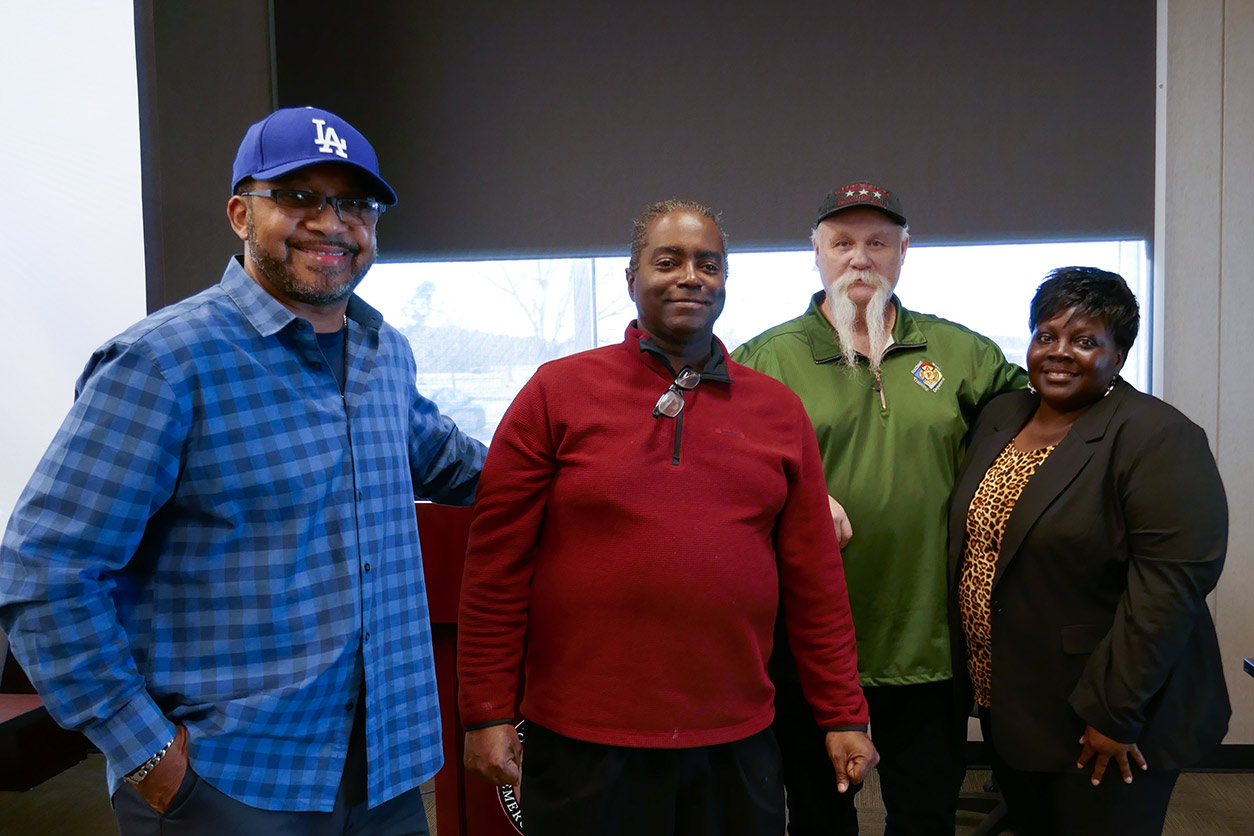 From left, McAllister, Leggette, Dudley, and Campbell posed for a group picture. (Photo courtesy of Demia Wright)
From left, McAllister, Leggette, Dudley, and Campbell posed for a group picture. (Photo courtesy of Demia Wright)“The train-the-trainer is a great model for teaching, and it can reach out to more people in the local area,” said ICWUC trainer Don Dudley. “Who is better to provide training than someone in your community who can speak from experience?”
(Kenda Freeman is a research and communication specialist for MDB, Inc., a contractor for the NIEHS Division of Extramural Research and Training. Demia Wright is an NIEHS public health educator.)





